There’s a lot to think about when it comes to selling virtually. Projecting a professional image in your virtual meetings is an important (and often overlooked) factor to consider.
With a little forethought and preparation, you can make a great first impression with your buyers.
Read on for guidelines and tips specifically focused on projecting a professional image in your virtual sales.
Five Categories to Look Professional Online and Prepare for Virtual Meetings
- Video
- Audio
- Lighting
- Background
- You
Video
Always use video for your virtual sales meetings. Even if the buyer doesn’t have their video on, seeing your face on the screen will help develop trust and rapport.
-
1. Set expectations in advance
Prep video for every call and communicate this in advance to set expectations with your buyer. Write explicitly in your meeting invitation: I’ll have my webcam video on for this call. Here’s how to turn yours on. If you don’t, you run the risk of having people not feeling "camera ready" when it’s time for the meeting. If you make the expectation of using video, you minimize this risk.
Note on technology: Different clients use different platforms for their meetings. Become familiar with the tools in each, such as video, mute, and screen share. In the last two weeks, I’ve attended meetings on Zoom, Webex, Microsoft Teams, Blue Jeans, GoToMeeting, and Skype.
2. Use an HD webcam
I have a Logitech HD 1080p webcam with a built-in microphone. Prior to using an external camera, I was always fuzzy on video. I now come through clear and sharp even in challenging lighting conditions. If you can't use a dedicated webcam, a built-in computer webcam is always preferable to a smartphone camera.
3. Head position
Be aware of where your head is. Don’t be “that person” whose chin or forehead is cut off. There’s one in every meeting. The top of your head should be 10% to 15% from the top of your screen.
4. Look into the camera
Don’t look left or right; this is distracting. Don’t look off to a second monitor. Look directly into the camera.
5. Position to eye level or just above
When you place a computer on your desk, it'll likely be angled slightly up at you. If this is the case, add some height to your computer so that it's about eye level. In general, avoid acute angles with your camera position.
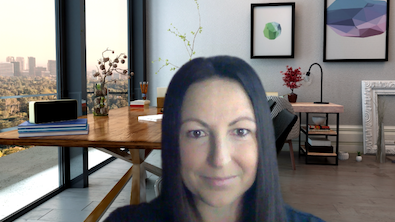
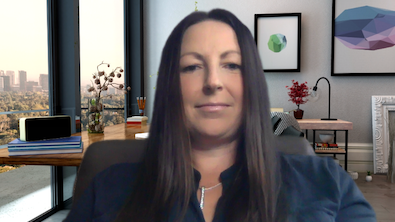
Camera too high
Camera too low
6. Stay in the visual
Don’t turn your video on and off, and as a rule, don’t get up and walk around. If you need to turn the video off, do it as infrequently as possible for as short periods as possible.
Audio
“Can you hear me now?”
“I’m getting feedback. Who has their phone and computer audio on?”
“Move closer to your microphone…”
“You’re on mute!”
All too familiar, all worth avoiding.
7. Get a high-quality microphone
Computer microphones aren’t typically very good. Invest in an external mic or quality headset. Consider your background noise. Some microphones are good at picking up voice only and leaving out ambient sounds.
I often use the microphone built into my webcam (see above), but also have an Mpow Bluetooth headset and a Blue Yeti mic for interviews and recording.
8. Dial in if needed
When bandwidth or audio quality are issues, dial in on the phone. Make sure you have a strong cell signal or use a landline.
9. Test sound
Prior to meetings, do a tech check to test your audio. It’s all too common that people buy and plug in a high-quality external mic, then forget to enable it! Don’t let this be you.
10. Turn off notifications
This is a big one. One of the most common, loud, and jarring annoyances is when a seller's notifications keep dinging loudly. This includes email, meeting notifications, Slack messages, text messages, and pop-ups that might appear on your screen. These alerts and noises are distracting and they bother your buyers. Turn them off.
11. Minimize background noise
Barking, voices, lawnmowers, etc. A high-quality mic with noise-canceling features can help minimize these at-home noises. If you need everyday noise reduction, you can get acoustic foam panels or other home soundproofing systems.
12. Mute typing noises
It’s OK to type and take notes during your sales calls, but when you do so, mute yourself or get a quiet keyboard (yes, these are quite common). Loud typing noises are incredibly distracting and make buyers think you aren't engaged.
13. Use mute wisely, stay aware
If you do put yourself on mute, make sure to unmute yourself when it’s time to speak. You want to avoid, “Sorry, I was on mute.”
Lighting
Lighting issues abound when it comes to virtual meetings and video. It’s not that difficult to control light. Usually all that’s needed is playing around with it for 15 minutes. Here are our top tips:
14. Face lighting
Light evenly with medium to light brightness. You often need lighting to be brighter than you think. If you’ve ever done a professional video, news interview, or photoshoot, you’re familiar with the bright lights that are used.
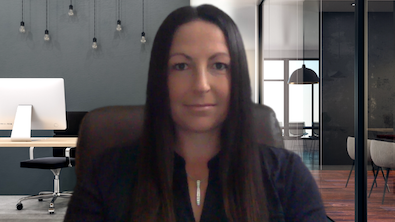
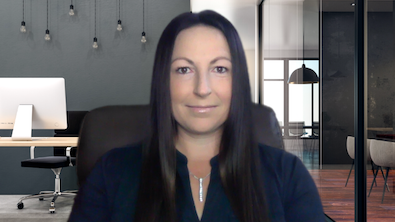
Lighting is too dark
Lighting is too bright
15. Shine
If you’ve ever done a video shoot, you know all professional videographers will pat your head and face with powder to decrease shine. Consider it if you’re on the shiny side or have a haircut like mine.
16. Backlighting and overheads
Backlighting (the light source is behind you) creates dark faces and shadows. Overhead lights often create glare. Test your lighting and be mindful to reduce both.
17. Purpose-built camera lights
Use purpose-built video lighting, desk lights, and dimmers as needed and as lighting conditions change. I live on a lake and sit with the view of the lake behind me. This creates an incredible amount of backlight, making me look like I’m in witness protection. I use ring lights to brighten my face and it works just fine.
18. Pay attention to the time of day
Where I sit, in the morning the sun is right behind me. For mornings, I have a green screen. It takes 15 seconds to stand up before calls. During the day, I use the ring lights. In the winter, when natural light gets low earlier in the afternoon, I have to be prepared to switch lighting in real-time because it goes from sunny to dark in an hour. It doesn’t take much, but awareness and forethought to keep up.
19. Color temperature adjustments
Depending on the light in your room and time of day, you can look somewhere between blue and orange. Use color temperature adjustments for hue control. Stay more white/blue than orange.
Background
Your background makes a strong statement about you. It’s a big part of your brand. Many people don’t notice this until it’s pointed out to them, usually because they need to change something. Here are tips on having a great background:
20. Four core options
The first is best, the others can be good too:
-
- Prepared actual background settings that are neat, clean, bright, and professional
- Green screen with a virtual background (avoid goofier-side backgrounds such as outer space and the Golden Gate Bridge)
- Step and repeat banner style background
- Plain, preferably monotone wall with or without windows
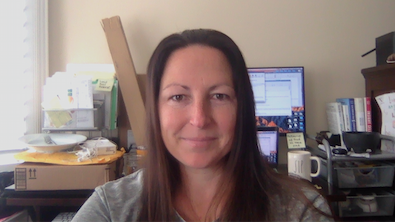
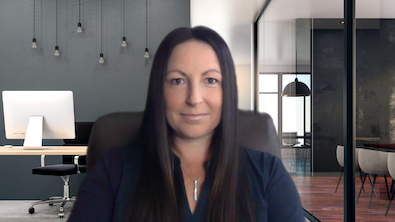
Messy background
Professional, digital background
-
21. Setting review
Carefully review your background for professionalism. Clean your bookshelf. Remove boxes and trash. Declutter the area. Prepared home backgrounds are all okay if meticulously curated. I was on a call recently and there was a garment rack with suit jackets in the background. It would’ve been easy to roll the clothing rack out of view. Instead, it was there, distracting me during the entire meeting. Not as bad as the empty tuna cans, though. You get the idea.
22. Authenticity
Real office settings are the best and most authentic. Curate your look and scene to project your desired brand.
23. Step and repeat
A "step and repeat" is a photo backdrop used for publicity and event photos. Think celebrity pictures at a charity event with the white background covered in logos. You can make one for your company, or really anything. A colleague of ours had one made with his newly published book and company logo. Think of a step and repeat as a big poster. Make sure it’s flat (no wrinkles), properly lit, and you like how you look in front of it.
24. Motion
Keep background motion to a minimum. People walking around and other motion in the background is distracting. If you’re going to be on a call, set up in an area where there’s likely to be little going on behind you.
25. Green screen
Use virtual backgrounds with a green screen to create a professional-looking background. Virtual backgrounds without a green screen can look anywhere from grainy and odd to awful.
You
Attend to your own look and project professionalism in your virtual sales meetings.
26. Color contrast
Make sure your clothes contrast well against the background. Avoid green with green screens. Avoid black with dark backgrounds (or your head will appear to float).
27. Think “important live meeting”
Prepare your look and dress as if you were live. If you’re not sure, always dress up 1 level. Your look is a part of your brand.
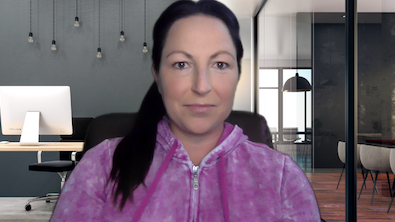
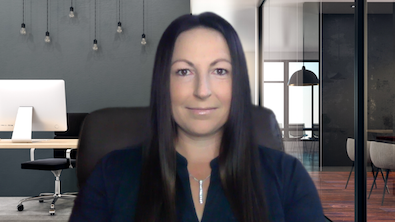
Unprofessional attire
Professional attire
28. Avoid busy patterns
Clothes with busy patterns can look fuzzy on camera and big patterns can be distracting. Lean towards solid colors. Similarly, reflective jewelry can be distracting.
29. Distance
Remain approximately 1.5 to 2 feet from the camera. You don’t want your face to be too small or too big in the scene. Think “news anchor” on TV and adjust your distance accordingly.
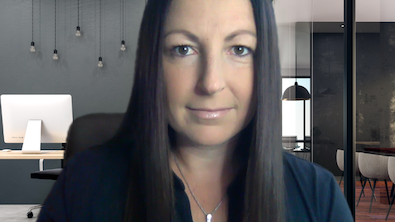
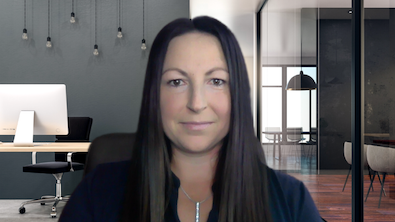
Too close
Proper distance
30. Stay present
This is one of the most important tips in this entire list. Keep your eyes on the camera. Don’t check your phone, second screen, or email. Too many sellers find themselves distracted in their sales meetings. It’s a major turnoff.
31. Wait to Communicate
In-person, it's easy to find a correct time to start talking. Online, some of these cues can be lost in translation, leading to more people interrupting each other. In addition, sound delays can also lead to interruptions. Pay attention to the flow of conversation and wait for a slightly longer pause to begin speaking.
32. Posture
Keep good posture. Slouching doesn’t look good. Don’t let your head bob from rocking in your chair. In fact, if you have a tendency to rock or twist in a chair that moves, switch it out for a stationary chair during your calls.
33. Personal animation
Some sellers overdo animation and facial expressions, which gets distracting. Other sellers don’t move at all, which gives an air of disengagement. Balance your animation. Note that most sellers are too understated and should project more.
Follow these tips and you’ll project a professional image in all of your virtual meetings.
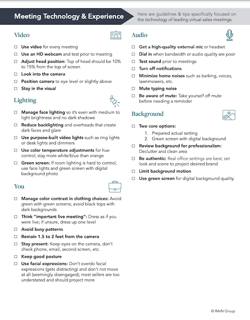 |
Be prepared for all of your virtual calls. Download our Virtual Selling Checklist >> |







